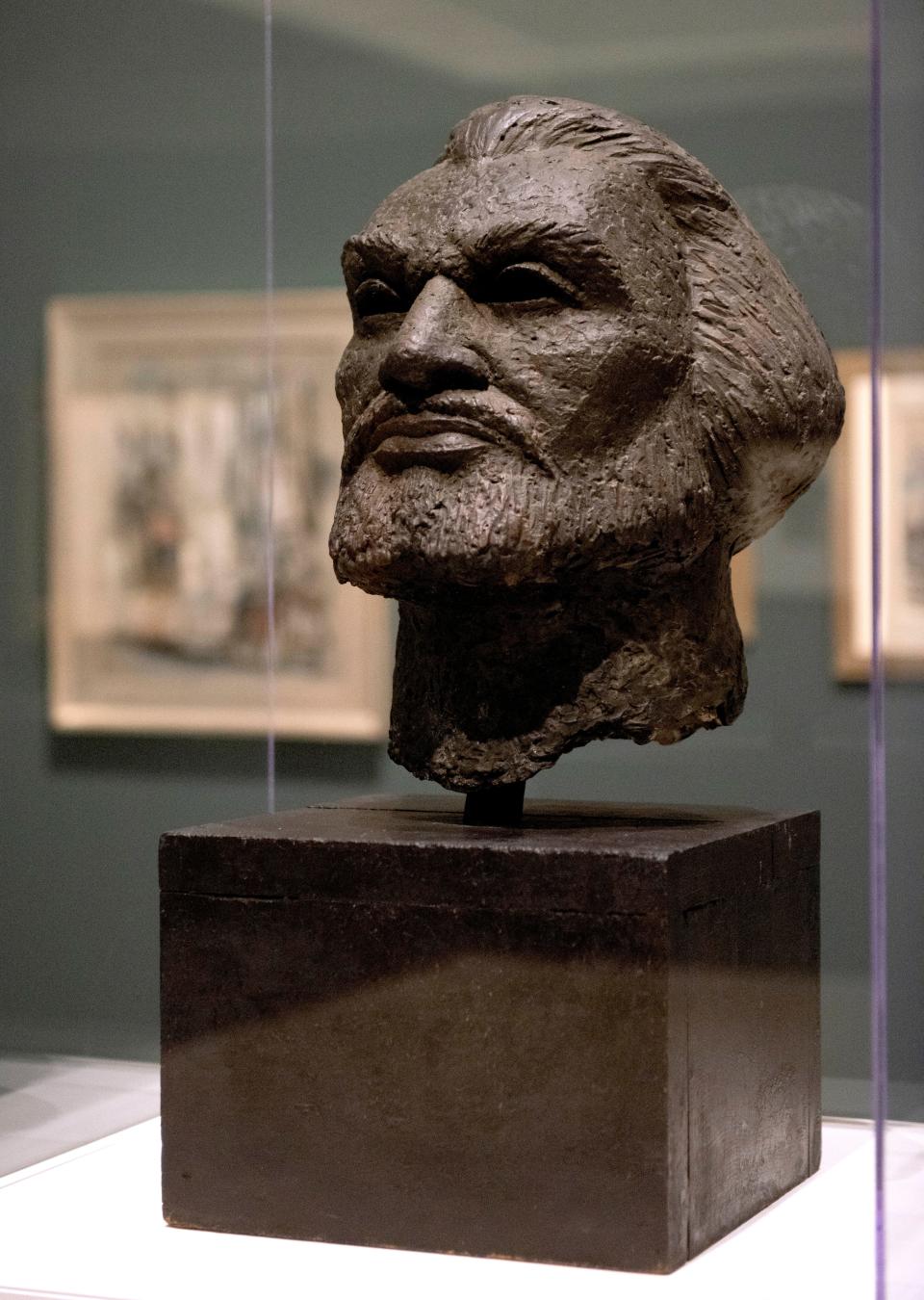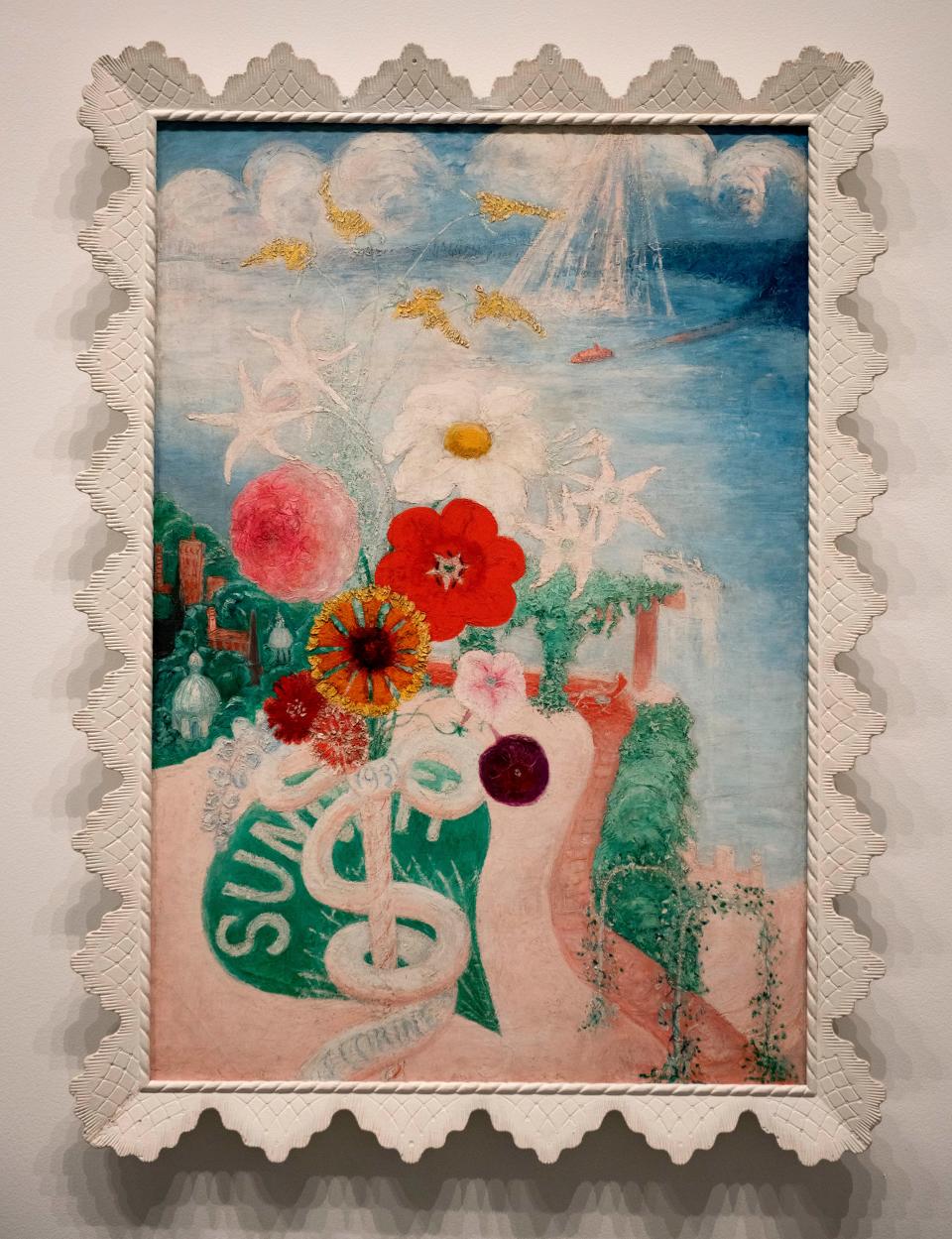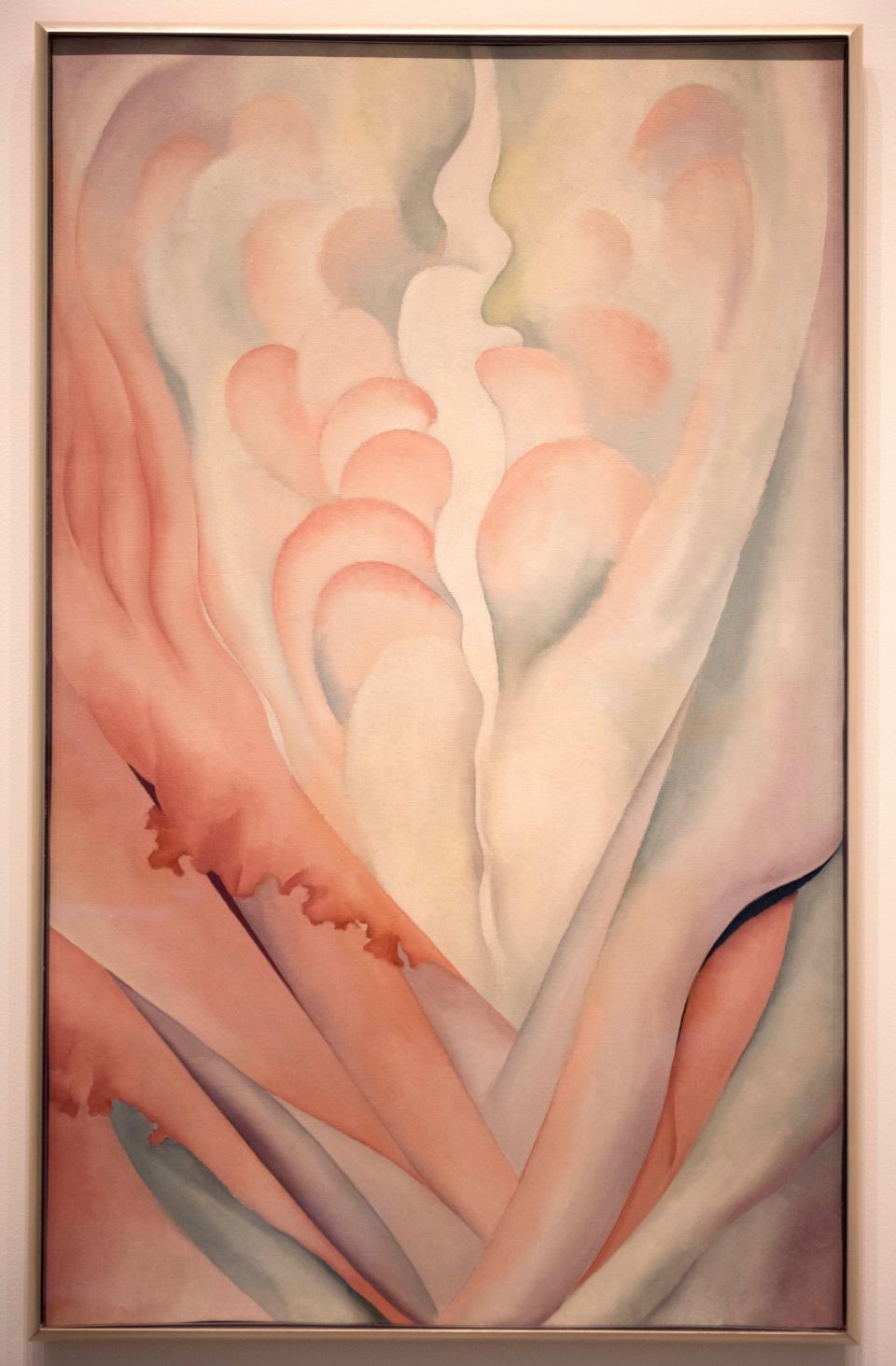Norton examines American modernism in two spring exhibitions
- Oops!Something went wrong.Please try again later.
The story of American modernism is being rewritten and the Norton Museum of Art is taking part in that conversation with its concurrent spring exhibitions.
"From Man Ray to O’Keeffe: American Modernism" and "At the Dawn of a New Age: Early Twentieth-Century American Modernism" both open Saturday at the West Palm Beach museum. The works in the "Man Ray to O'Keeffe" exhibit come from the Norton's collection while those in "At the Dawn of a New Age" come from the Whitney Museum of Art in New York.
The companion exhibitions will explore connections between the leading collections of American modernist art held by the Norton and the Whitney, looking at the ways in which each respective institution has grown their collection to more accurately reflect art of the early 20th century, museum officials said.
“Modernism has always been a significant focus for the Norton. Drawing from the Norton’s extensive holdings of American art alongside work from the Whitney, we can present a fuller, richer history of the movement,” Norton CEO Ghislain d’Humières said in a prepared statement.

“Our founder, Ralph Norton, became deeply fascinated by modernism in the final years of his life, gifting era-defining works to the museum. In the subsequent decades, we have taken up the mantle of ensuring our collection most accurately embodies the spirit and diversity of American creativity at this time, as reflected by the works on view in 'From Man Ray to O’Keeffe,'” d’Humières said.
The works in both exhibitions span 1900 to the 1930s, a period that was steeped in change, including a new era for manufacturing, communication and transportation, and the successful fight for women’s suffrage. Against this backdrop, many American artists adopted the new and experimental over the traditional and fixed by rejecting realism in favor of art that gave precedence to emotional experience and harmonious design, the Norton said.
Ellen Roberts, the Norton's senior curator of American art, said the companion exhibitions feature works by readily recognizable names as well from lesser-known artists.

Roberts noted that the history of modernism left out a lot of people in its early telling, but attempts are now being made to recast that story to include those who were overlooked, often people of color and women. Interestingly, West Coast artists often were overlooked because those writing about modernism were based in the Northeast, particularly New York, she said.
The goal of the these exhibits, she said, is to have "a more diverse representation of modernist artists."
More:Norton Museum names new curator of photography
More:Norton Museum gets $750,000 in federal funding for structural, safety improvements
More:Norton Museum names new curator for contemporary art
"At the Dawn of a New Age" features 58 pieces from the Whitney. The works are organized thematically, Roberts said, in order to help visitors better understand the different elements of modernist art.
There is a section dedicated to pure abstraction, where the artists "no longer have any connection to the real world," Roberts said. Fans will see pieces by Georgia O'Keeffe.
Another section is dedicated to artists who tried to capture sound in their art. Works in this section include O'Keeffe's "Music, Pink and Blue," E. E. Cummings' "Noise Number 13," Stanton Macdonald-Wright's "'Conception' Synchromy" and "Oriental: Synchromy in Blue-Green," and Joseph Stella's "Der Rosenkavalier."
The section on still life, Roberts said, aims to focus the viewer on the modernist approach to traditional art. Landscapes, photographs and sculptures also are included in this section. Both the landscapes and sculptures, she noted, represent a simplification of form that was typical of the period.

Singling out O'Keeffe's "Flower Abstraction," which gives an intensely up-close look at a flower, Roberts noted the artist famously said her intent was to "make even busy New Yorkers take time to see what I see of flowers.”
The sculptures include Elie Nadelman's "Spring" and Richmond Barthe's "African Dancer."
There also are prints, including "The Stream" and "Moonlight" by Isami Doi, who Roberts said was the first Hawaiian artist to find success on the mainland.
The theme of the tension between dream and reality is a common one in many of the pieces, Roberts said.
Other artists featured in "At the Dawn of a New Age" include Florine Stettheimer, who painted for pleasure and whose works gained fame after she died; Frank Stella, whose "Luna Park" tries to capture the energy of theme parks; and Marsden Hartley, who fell in love with a German soldier who died in World War I and whose paintings often tap into the grief he felt, Roberts said.
"From Man Ray to O’Keeffe: American Modernism" exhibition, which also is organized thematically, features works from the Norton's collection including Stuart Davis' iconic "New York Mural" — a famously complex work. He created the work, which touches on politics and other elements of the city, after the Museum of Modern Art asked for works to be part of a show of murals by painters and sculptors.
The depiction of other cityscapes are included in this section, which includes works from John Marin and Paul Strand, who was a good friend of O'Keeffe. The friendship is seen in a collaboration they did in depicting a church in New Mexico in their particular medium — she with a painting, "Ranchos Church No. 1," and he with a photograph, "St. Francis Church, Rancho de Taos, New Mexico." The painting was done two years before the photo, Roberts said.
There also is focus on artists who were drawn to history. Among them was Henry Bannarn, who had a reputation as one of the foremost sculptors of the Harlem Renaissance. His sculpture of Frederick Douglass is part of the exhibit.
Florence Hen's photo montages of Rome are included as well. Many of the paintings show the artist navigating the flatness of the work, while trying to add a 3-D dimension to present it as a window on the world, Roberts said.
Museum founder Norton was a fan of modernism and it was he who acquired many of the pieces that are in the museum's collection, she said. Walt Kuhn's "Morning Landscape" is one of the pieces and it has an interesting side story. As Roberts, tells it, the museum's founder was a little bothered by the fact that Kuhn's painting was undated, so when Kuhn visited Norton, he added the date, "1912," at Norton's request.
While not an official theme, there are works on display by people who are married to each other. Arthur Dove and Helen Tore have works on exhibit that have a similar appeal to nature, and works by O'Keeffe's husband, Alfred Stieglitz, also are on display.
Stieglitz was an important photographer and art dealer whose sphere of influence became known as the 'Stieglitz Circle." Norton loved works from members of the circle, Roberts said.
Charles Demuth, whose "After All" is in the exhibit, was part of that circle. Demuth decided late in life to focus on the factories of Lancaster, Pennsylvania. "After All" is part of that series.
Also included in "Man Ray to O’Keeffe" are Man Ray's "Ray O graphs" as well as works by Imogene Cunningham and Blanche Lazzell. Norton loved still life, Roberts said of the section dedicated to that form, "he was interested in how you make a painting ... he liked beautiful things."
And, finally, there are works of artists depicting each other and themselves.
If you go
Exhibits: "From Man Ray to O’Keeffe: American Modernism" opens Saturday and runs through July 16. "At the Dawn of a New Age: Early Twentieth-Century American Modernism" opens Saturday and runs through Aug. 27
Info: Ticket entry for the exhibitions is $5 plus general admission. Museum members and children 12 and younger receive complimentary admission to both special exhibitions. The Norton Museum of Art is at 1450 S. Dixie Highway, West Palm Beach. For more information, call 561-832-5196 or visit norton.org
Carol Rose is a journalist at the Palm Beach Daily News, part of the USA TODAY Florida Network. You can reach her at crose@pbdailynews.com. Help support our journalism. Subscribe today.
This article originally appeared on Palm Beach Daily News: Norton Museum explores American modernism in two spring exhibitions

